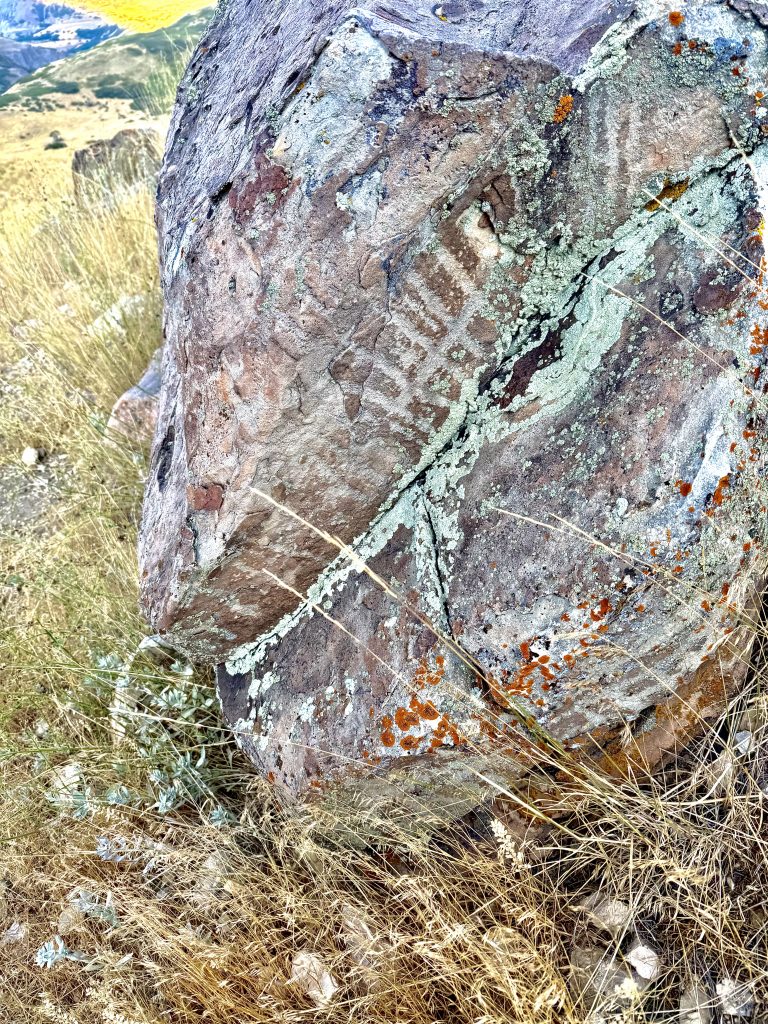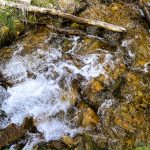 I took some family members hiking recently to see if we could locate Native American rock art in the foothills near town. A year earlier I’d dropped a pin in Google Maps after spotting a stray AllTrails post. Sure enough, after a steep ascent, we found it—petroglyphs etched into lichen-covered boulders, quiet evidence of lives that once looked out over the same valley.
I took some family members hiking recently to see if we could locate Native American rock art in the foothills near town. A year earlier I’d dropped a pin in Google Maps after spotting a stray AllTrails post. Sure enough, after a steep ascent, we found it—petroglyphs etched into lichen-covered boulders, quiet evidence of lives that once looked out over the same valley.
But what goes up must come down.
The scree trail we had climbed without much trouble turned tricky on the way back. Loose gravel shifted beneath us. My hiking partners slipped, catching themselves again and again. “Lower your center of gravity,” I urged, crouching slightly, leaning forward over my toes. With that adjustment, our footing changed. We moved with new agility, and made it unscathed to the bottom—hearts racing, minds carrying a fresh lesson.
The Principle of Center of Gravity
In physics, the center of gravity is the point where weight balances. Stand tall and that point rides high—your body becomes a long lever, easily tipped. Bend slightly, knees flexed, torso lowered, and the fulcrum shifts. You become less top-heavy, more rooted, harder to move.
That’s why crouching works on a slope. On unstable ground, stability comes not from standing erect but from lowering yourself. The body knows this intuitively: a toddler learning to walk stays close to the floor, a hiker braces low in strong wind, a climber presses tight to the rock face.
Fulcrum and Lever
Archimedes once boasted: “Give me a lever long enough and a fulcrum on which to place it, and I will move the world.” He was right. Place the fulcrum near the load and even a small force can shift enormous weight. Move it near the handle and the lever loses all power.
Think of a teeter-totter. Equal weights on both ends balance perfectly; shift a little and the whole board tips. The higher one rider rises, the easier they are to unseat. Our bodies work the same way. Stand stiff and tall and the world has leverage against you. Shorten the lever—lower your stance, drop your center—and you become harder to move.
Terrain and Response
It’s telling how many names we’ve given to unsteady ground: scree, talus, black ice, frost. Each describes a surface designed to betray footing. And we’ve matched them with words for how we respond: self-arrest, crouch, brace, hunker. The vocabulary itself admits the truth—instability is everywhere, but so is adaptation. The ground will always shift; the choice is how we carry ourselves upon it.
Beyond the Trail
The lesson holds in other places:
- Sports: wrestlers drop low, football linemen crouch wide, skiers bend into their turns. “Low man wins” is as much physics as strategy.
- Labor: workers lift by squatting, protecting the spine and keeping balance close to the ground.
- Nature: goats creep down cliffs with knees bent; predators crouch before they pounce.
- Weather: hikers crouch into gusts; climbers hug the wall to reduce leverage against them.
And then there’s life itself. Pride lifts our center, making us top-heavy and fragile. Humility lowers it, anchoring us to what’s solid. Ego makes us vulnerable; bending makes us steady.
The Paradox of Stability
Archimedes taught how to move the world with leverage. The teeter-totter shows how quickly balance can shift. Hiking on scree reminded me of the reverse: lowering our stance removes the world’s leverage against us.
That day we set out in search of ancient petroglyphs and returned with more than carved stone. We carried a new truth etched just as deeply: stability often comes by going low.
The paradox of balance is this—lower your center, and you stand stronger.
On a loose slope, or in life itself, that’s often the surest way forward.





